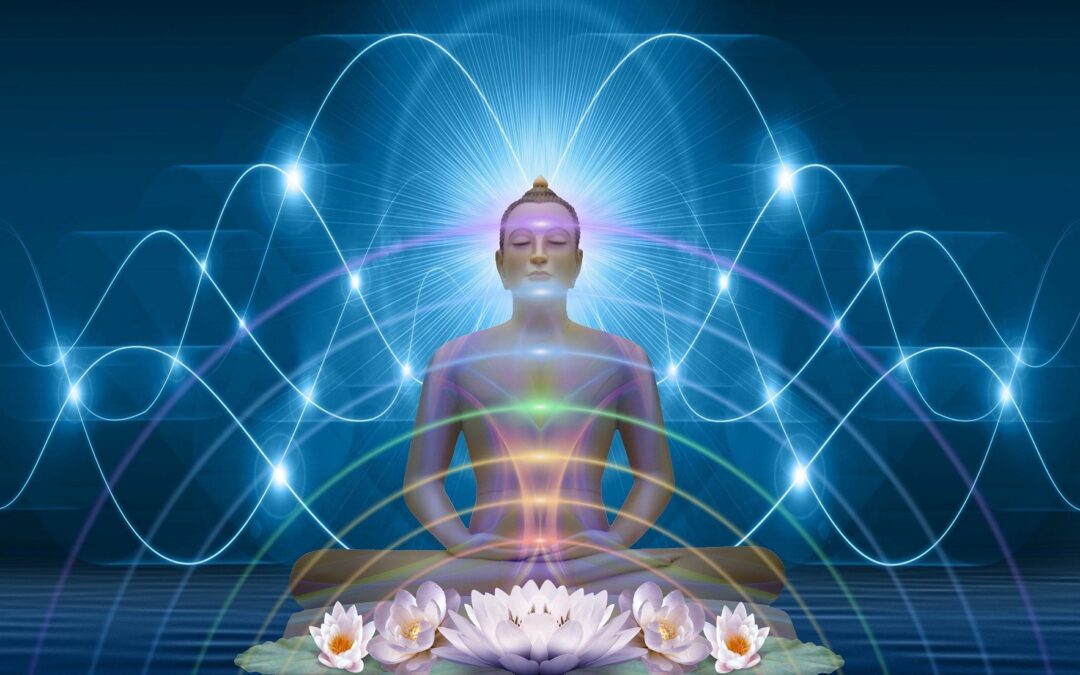
Resiliency
|

|

Having boated for a few years now, we’ve come to understand that not all weather situations can be predicted. Between the regional weather forecasts, the marine weather broadcasts and anything else we can find on our boat radio or cellphones (whenever we are able to get a signal, that is!), all we can do is make an educated guess at what might happen over the next few hours. Even with all the technology we have, Mother Nature can change her mind in a second – and send everyone running for cover. Or, battling it out on the high seas.
On our last boating journey, we came across a book entitled, Reading the Clouds: How You Can Forecast the Weather, by Oliver Perkins (c.2018). This young lad (his first book came out when he was 15 yrs. old) is helping us remember the cues and clues that are up in the sky. Electronics and internet gadgets are great, but there are times when there is no signal to be found, the electrical charger didn’t work or there is no time to consult a “google master” before disaster hits. A quote from the book’s back cover states, “To get an idea of how the weather will develop for the precise spot where you are standing (or walking, sailing, golfing, camping, fishing, etc.), you don’t need any equipment or wifi connection – you just have to look up!”
The book is a comprehensive account of the science and rationale for weather forecasting, clouds and their meanings. What piqued my curiosity was that in the final chapter, he also explains how some of our folklore tales and proverbs have validity in forecasting the weather. He also debunks a few of these tales, as well. Here is a sampling of some of the tales he explains.
Red sky at night, sailor’s delight. Red sky in morning, sailor’s warning.
“This is the most well known of the weather proverbs. It appears in the Bible, so it was known at least by the 1st century AD. This proverb works due to the position of the sun and the clouds. For a red sky to occur, it must not be cloudy on the side of the sky where the sun is. However, there have to be clouds in the other side of the sky onto which the sun can shine its light. If there is a red sky in the evening, it means that there must be clear weather to the west, but poor weather to the east. That means that the weather is improving as weather systems generally come from the west. A red sky in the morning has the opposite effect. Note: this proverb is only correct in the mid-latitudes where the weather systems generally come from the west.” (p.100)
A halo around the sun or moon means rain or snow coming soon.
“The refraction of light in the ice crystals in cirrostratus clouds causes halos. These clouds are often present before a depression approaches and as we know, depressions bring rain or snow. Cirrostratus clouds are not often seen unless a depression is approaching, so this weather proverb is usually quite accurate.” (pg.100-101)
The sharper the blast, the sooner ‘tis past.
“This one basically means that the more ferocious the poor weather and the quicker it sets in, the shorter it will last. Strong thunderstorms always last less than an hour; however, in a warm front or in a warm sector, the rain will last for hours or days, but will be much lighter.” (pg.101)
If the goose honks high, fair weather. If the goose honks low, foul weather.
“This proverb is referencing how high the geese fly, not the pitch of their honk. Geese fly best at a certain air density (ie. pressure), which changes with the weather. In a depression, where there is low pressure, the geese fly low as the optimal air density for flying is lower. In an anticyclone, which normally brings fair weather, the air pressure is greater so the geese fly higher to find the optimal air density.” (pg.104)
When your joints all start to ache, rainy weather is at stake.
“Here is another pressure-related proverb. When there is low pressure, it allows tissues to expand in the body, which can put pressure on the joints, causing pain. This is why arthritic people often say that they can predict when bad weather is coming. Obviously, this proverb is not necessarily the most accurate as your joints could ache for countless other reasons, too.” (pg.105) (NOTE: most folks with arthritis CAN tell that the weather is changing!)
If the spiders are many and spinning their webs, it will soon be very dry.
“In high humidity, spider webs absorb water and become heavy, causing them to be more obvious to prey and prone to break. Spiders are very sensitive to moisture in the air and they are aware that their webs may break, so when there is high humidity, they will hide and not spin their webs. When spiders sense low humidity, they will come out and resume their web spinning. This is a useful indicator because if there are lots of spiders spinning their webs, we know that fair weather is probably here for at least a day.” (pg.104)
Mountains in the morning, fountains in the evening.
“Tall cumulus clouds tower up high into the sky like mountains, and if these are seen early in the morning it indicates that the air is quite humid. These clouds then grow further during the day and by the afternoon it is likely to be showers, although these showers will tail off by evening.” (pg.108)
All quotes from Reading the Clouds: How You Can Forecast the Weather by Oliver Perkins
Hope you have fun “testing” your weather forecasting skills!

“Astrologically, 2020 is a powerful year with some of the most life-changing and transformative aspects seen in a very long time. All of us are being guided to bring closure to karmic lessons and open new doors. The opportunities for growth are HUGE. The Key to Change is Awareness. What is calling you? What is holding you back? Be the Change. … This is a decade for great personal and global growth. Old belief systems are being challenged and destroyed. making way for new ideas and new solutions.” Marlyna Los, Feng Shui Master
“2020 opens with a rare multi-faceted planetary alignment in Capricorn, the likes we have not seen in 800 years! Outer planets Jupiter, Saturn and Pluto will complete and launch short-term and long-term cycles. Capricorn is the archetype of Time and Reality. Pluto’s transit through this sign swings the wrecking ball on any structure or reality (social, political, economic) that has outworn its purpose. Marking the beginning of a new decade and a new world era, 2020 is a major reset year for the personal life journey and for the outer reality, too. … The year ahead warehouses several significant bigger picture planetary conjunctions. It is a year of endings of significance, but more importantly, 2020 marks the threshold of a new reality that will define the shape of things to come for many years to come. … A major chapter in your life is working its way to an end while the next major chapter is already mapping itself out. Each and all are destined to meet up with radical change on the road ahead – and in the not-too-distant future. Confront was is necessary, finish it up, choose and do in a self-honouring way and make the wise use of time, resources and assets your top priority. A step ahead is always the best place to be. Set yourself up now as best possible and you’ll be better able to weather and harness the changes that lie ahead.” Rose Marcus, Evolutionary Astrologer
What we didn’t know at that time was in a few months the world would be topsy-turvy from a virus scare that shut down the world as we knew it! It has taken years to get back to some level of comfort and normalcy. We have more understanding of what actually was taking place behind the scene at that time (can you say politics, media and billionaires?) and what narrative we were being given. Yet, the personal work we set out to do for ourselves before all this occurred was and still is relevant!
Manifesting dreams and miracles start with: Stop; Reflect; Set an Intention The clearer this Intention, the more likely it is to come true. Successful people don’t start with How it will be done. They first decide What it is they want to create. What is the dream? What does it look like? What does it feel like? The How comes later!
Third Step points to Inner Work required for dreams to manifest. Changing personal Core Beliefs that block our success can be dealt with using:
Remember: We manifest what we BELIEVE, not what we WANT
A final point: Elevate your personal vibration to its highest level. Avoiding toxic people and situations, letting go of your past, forgiving yourself and others, connecting to your Higher Self are ways that will reprogram your Mind and set your vibration higher. If that sounds too complicated, here is a simpler way. Every day, connect with yourself and others from a place of Love, Peace, Joy and Gratitude as this will automatically raise your personal vibration.
May you find ways of making every day your best day yet!
In the words of Sonia Ricotti, “Life doesn’t have to be perfect to be wonderful”

It can be difficult accepting things and moving on. Sometimes we are shown the next step, sometimes we are not. A place of inertia, indecision and/or hesitancy can greet us when we are faced with situations that challenge our sense of self, balance and the world we live in. The phrase, “Go with the Flow” is often easier said than done!
When we resist change, we set up tension between our mind ~ body ~ spirit. This tension, over time, can create difficulties with health (physical and mental), relationships and behaviour. As tension mounts, our ability to positively cope with stress reduces. Healthy coping measures are often replaced with excessive use of drugs, alcohol, gambling, shopping, sex, violence or other unhealthy behaviours. These behaviours serve a purpose: they distract from the tension we are experiencing, yet do so only for as long as we are engaged in that behaviour. The issues creating the tension are not effectively dealt with, so they remain with us. Over time, these unhealthy behaviours destroy our ability to successfully cope, which can lead to breakdowns in family relations, work performance and our own sense of self-esteem and self-worth. If you thought you had tensions before, now you have even more to deal with!
The ”Go with the Flow” expression also points to another style of behaviour. Those needing to control everything and everyone will find it difficult to be in the place of changes and unknowing. Their constant need to be in control will automatically trigger stress and tension when suddenly they are not the ones in control. The need to control can have several root causes. Fear of change and loss, not feeling safe, low self-esteem and worth, arrogance (which can be an overcompensation for low self-esteem), abuse survivor, child of a parent with addictions, are a few of the root causes identified. If someone needing to be in control is not able to control the presenting situation or person, their mounting internal stress and tension can trigger even more harsh controlling words and behaviours (the word, “bully” comes to mind). And yes, it can get very ugly. Relief is achieved only when the situation or person bows to their controlling demands.
So, what is needed here?
Early on, we need to learn and use many types of healthy coping skills. A “coping skills tool-box” sets the foundation for being able to tolerate that place of change, loss and unknowing. If one way of coping doesn’t work, you still have other healthy ways to use. Unfortunately, most people rely on only one or two ways to cope with life’s twists and turns. When these don’t work, it is very easy to turn to distraction or emotional numbing activities/substances. Short-term relief is possible, but long-term solutions and relief are buried. So, broaden your healthy skills set!
Acknowledging that something is not under your control is a good step in understanding your role in the situation. It doesn’t mean that you have no power. It means that you understand what your role is and that you have the power to decide how much time, energy, money or self-esteem you wish to spend trying to change the situation. Sometimes, we need to allow a situation to “unfold” before we decide just how much we will offer to help. It is healthy to remember that it is not up to us to “fix” everything and everyone coming our way. Discernment helps us know when to jump in and when to stand back and watch the movie unfold.
Accepting that change, loss and uncertainty are part of our human existence helps to keep things in perspective. It is the cycle of life: birth ~ death ~ rebirth. When we can accept that there is a natural flow to life and accept that we are not always privy to the reasons behind the course taken by the flow, we are less likely to feel pressured to change its course. This is not to say that we sit idly by and just let things happen to us; we are not victims. Acceptance is not the same as Complacency. Again, with Discernment as our guide, we take steps to reduce our tension and stress created by change, loss and uncertainty. These steps support our health and well-being. So, we learn to “Go with the Flow” in ways that maintain our health and wellbeing.
Everyone has a different waterway to manoeuvre in their lifetime. It is set up uniquely for us in order to learn our Life Lessons. Yet there are many similarities between us with how these waterways can be navigated. We decide if we navigate with healthy or unhealthy coping skills. When we can Acknowledge, Allow, Accept and Respond in healthy ways to life’s challenges, we give ourselves the best opportunity for health, healing and happiness. In other words, we give ourselves the Gift of Flow.

(p.7 Ayurveda and Aromatherapy by Drs. Light and Brian Miller)
For example: Your purpose is peaceful, yet if your thoughts are fearful and your emotions negative, your physical body will manifest some dis-ease as a “wake-up call to change”. In Ayurveda, the manifestation of a disease is considered to be a good sign, because it reveals a previously hidden aspect of yourself – an aspect to be healed. Health is harmony within all aspects of self. This inner harmony also becomes manifest as harmony with family, friends, co-workers, society and Nature.
According to Dr. Light Miller, “The overall goal of Ayurveda is true freedom from death and disease; we are to experience the enjoyment of uninterrupted physical, mental and spiritual happiness and fulfillment. Enjoyment is one of life’s purposes! But you can lose your ability to enjoy if you over-indulge, and disease is one of Nature’s ways of saying you’ve over-indulged.”
The ancient Vedic word for immunity means, “forgiveness of disease” – this comes from the concept that negative thoughts and lifestyles can cause disease.
Although today’s scientists may not describe the Immune System in this way, they do acknowledge that the Immune System plays a key role in every aspect of our health and wellness. And it can be weakened by physical, emotional, mental and environmental “toxins” and overload. Is this another way of saying, “a mind-body-spirit disconnect”?
While each of these is a whole course in itself, we shall briefly define/describe what each of these is about.
The Seven Major Chakras are considered vortexes of Universal Energy that have physical, emotional, mental and spiritual influences. They exist outside the body and have points of connection with the body through which energy flows. Most meditations refer to Chakras in order to help with grounding and connecting to a Higher Source.
Each chakra has a colour, sound, aroma, crystal and shape assigned to it. They are described as balanced, imbalanced, open, closed. There are positive and impoverished emotional charges to them.
By now, you likely have a sense that working with Ayurvedic Medicine is incredibly detailed – and you would be correct! This is also where the concept of “Holistic” began. It was, and still is, the driving force behind everything in Ayurveda. With today’s fast-paced, confusing and worrisome world, it is a very different way of looking at ourselves, our healing and well-being. Strengthening the Mind~Body~Spirit in a holistic manner, may be what the world needs now.
Recent Comments